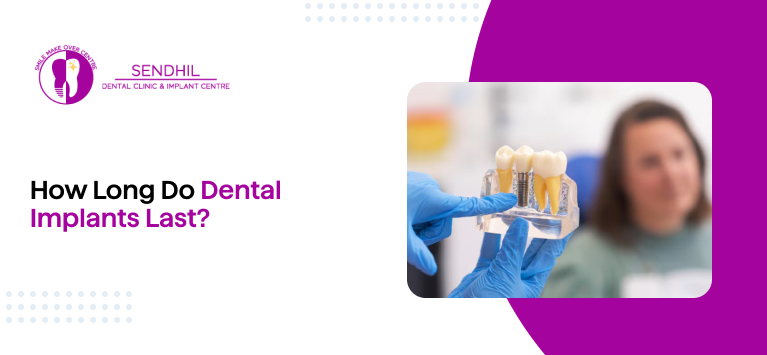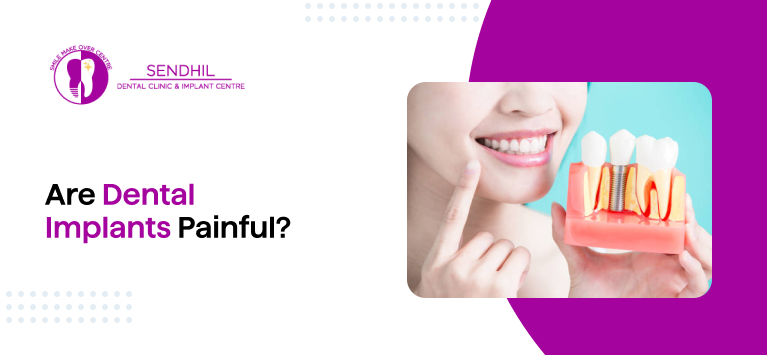Factors contributing to dental implant failure
In spite of the tremendous successes of dental implants, failures may happen at an early or later stage. Most implants have three parts: a titanium implant body that is inserted into the bone, an attachment called an abutment, and a crown that is fixed to the abutment and aligned with your remaining teeth. Issues can develop with all three parts if one becomes loose or broken.
In a process called osseointegration, our body produces living bone cells to grow around the implant surface and anchor it to the jawbone. Over time, healthy bone continues to surround the implant. When this fails, problems arise. There are many reasons an implant could fail and these reasons can cause either an early dental implant failure or late/long-term failure.
Table of Contents
Early Dental Implant Failure
Early failure of dental implants usually happens within three to four months after the procedure during the process of the implant integrating with the jaw bone.
Here are some of the most common causes of early dental implant failure.
1) Autoimmune Diseases
An autoimmune disease is basically illness that causes the body’s immune system to fight against itself, attacking and damaging the body’s tissues. This can lead to a high probability of the body rejecting an implant.
Types of autoimmune diseases include:
- Rheumatoid arthritis
- Lupus
- Multiple sclerosis
- Type 1 diabetes
- Celiac disease
2) Poor Blood Supply
Blood clots open wounds and carry nutrients needed for the body to heal. So if after getting implant you have a lack of blood rushing to the surgical area, the healing process will be slowed or even halted. This poor blood supply could be from a blood disease, a blood clot elsewhere in the body, or an autoimmune disease.
3) Medications
Some medications can get in the way of the success of dental implants. It is important to be completely upfront with your dentist about the medications you take or have taken in the past.
4) Infections
One of the most common infections that affect dental implants is peri-implantitis, a type of gum disease. This infection can begin during or after the surgery. In most cases of peri-implantitis, it requires a dental implant failure replacement.
5) Allergic Reaction
Most dental implants are made of titanium alloy and can sometimes have small traces of nickel. This can cause an allergic inflammatory reaction in some people
Long-Term Failure
If a dental implant fails anywhere from one to 10 years after the procedure, this is considered a late/long-term failure. There are several factors that can contribute to a late dental implant failure.
1) Under-Engineered” Procedure
An under-engineered procedure means that there are too few implants to support the replacement teeth. This leads to too much stress on the implants.
2) Smoking
Smokers who need dental implants are at a higher risk of experiencing a failed implant. Anywhere between 6.5% to 20%, according to the Journal of International Society of Preventive & Community Dentistry
3) Bruxism
Bruxism is the medical term for repetitive teeth grinding or clenching. This grinding or clenching puts extra pressure on the teeth and causes them to wear down or be damaged. This usually happens overnight while a person is sleeping. Bruxism can make it difficult for an implant to integrate with the jaw bone because excessive pressure on the teeth and implant and hurt the process. If it persists, it can lead to a failed implant.
4) Lack of Gum Tissue
The amount of gum tissue determines the quality of the seal around the implants — the more tissue, the better the seal. The lack of adequate gum tissue can cause the implants to loosen and eventually fail.
5) Lack of Bone
For those who don’t have sufficient bone to support an implant, bacteria can get in there and infect the site. It’s difficult for the body to rid this small and crowded area of bacteria, and the dentist may need to replace the implant.
6) Mechanical Damages
An injury to the face or mouth can lead to the failure of the implant. If it’s left uncared for, the dentist may eventually have to replace the implant.













